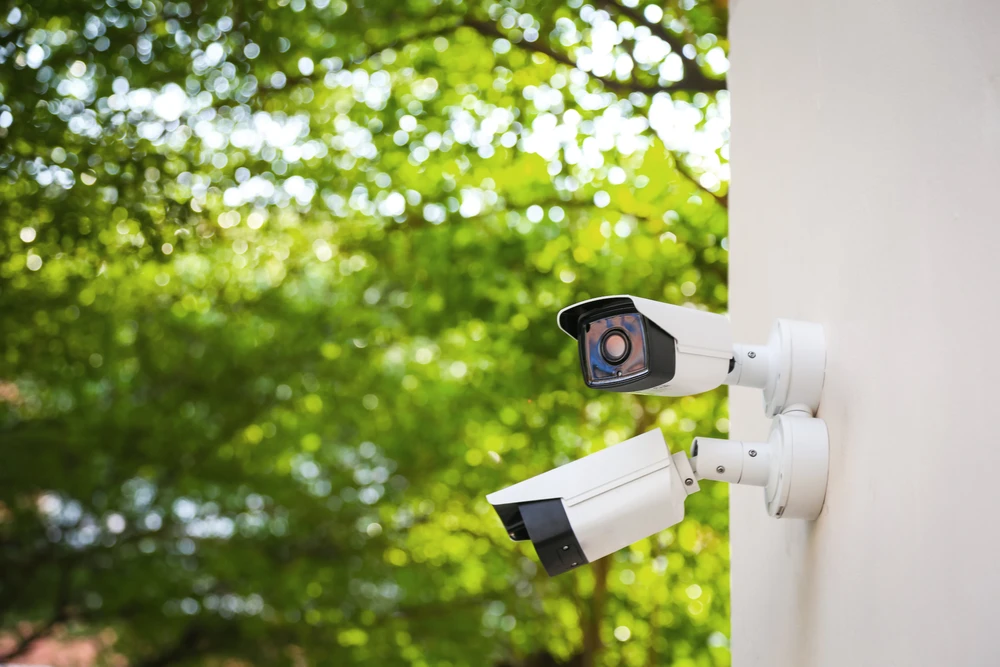 Click to enlarge!
Click to enlarge!
A few years ago, it was hard to imagine that IP cameras could completely push analog CCTV cameras out of the market. Today, IP cameras are easier to use, adjust and install. Configuration of modern IP cameras no longer requires any specialist knowledge, the whole installation process consists of connecting the camera with a network cable. If both the camera and the switch support PoE technology, it is not necessary to connect a power cable to the camera, as the power supply voltage is supplied via twisted pair cable.
The main reason for the popularity of IP cameras is the higher resolution offered, and thus the quality of the generated image is significantly better. IP cameras with resolution above 5 megapixels allow to enlarge a given area of recorded frames without losing quality significantly.
In an analog system, the monitoring cameras are connected to the recorder via a coaxial cable. All video recordings from the cameras are stored on the hard disk of the recorder. The videos can be stored for several days or weeks (depending on the capacity). DVR (Digital Video Recorder - it is a digital recorder, a device that allows to record video captured by cameras) is available in different types: 4 channel, 8 channel, and 16 channel. All depending on how many cameras we want to connect to them. Most DVRs can also be connected to a router, allowing you to watch security cameras over the Internet from anywhere in the world.
In an IP camera system - the devices are connected directly to the network and the video is recorded by a network video recorder (NVR). NVR uses video management software. In this case, video transmission from monitoring cameras does not require conversion from analog to digital format. The PoE switch significantly simplifies installation. The NVR can be connected to the Internet, so we have the ability to view live camera footage from anywhere using a laptop or a smartphone.
 Click to enlarge!
Click to enlarge!
A 12 VD power supply is normally required to power an IP camera, but this value may vary. Please read the manual first. Power supply from an unsuitable power source will damage the camera.
PoE - enables data transmission and power supply via a single twisted pair. This power supply is only possible if the IP camera supports this type of power supply and if your network equipment (router or switch) can provide this type of power.
You should select an IP camera with memory card storage capability, this will allow you to view the video not only live but also in the archive.
In addition to recording to a memory card, the most common option is to buy a subscription for cloud recording. This option is preferred if there is a chance that the camera may be ripped out of the installation site and stolen with the memory card. Note that the cloud storage will only record video if the device is connected to a network.IMILAB EC2 is a completely wireless security camera solution. The device has a very elegant design, in a style typical for the Chinese manufacturer, making the camera easy to install. It is a wide-angle camera recording video in 1080P, and the field of view is as high as 120 degrees to minimize blind spots. The built-in battery in the camera has a capacity of 5100 mAh, which allows the device to work on one charge for up to four months. I must admit that this is an impressive value. A standard USB cable is used to charge the camera, so you will not need any special equipment if you lose the cable. It is also worth mentioning that the device is IP66 certified, so that the camera is resistant to weather conditions and high temperatures from -20 to 50.
The camera's dimensions are quite compact and are 14 x 7.3 x 4.7 cm, and the device weighs only 270 grams. In addition, the device has a very simple and minimalist design. The camera has two separate mounts on the back of the housing. The first one is for mounting on a wall with two screws, and the second for mounting on double-sided tape, the first method will of course be more reliable than the second. On the front there is a lens, eight infrared diodes to activate night mode and blue LED.